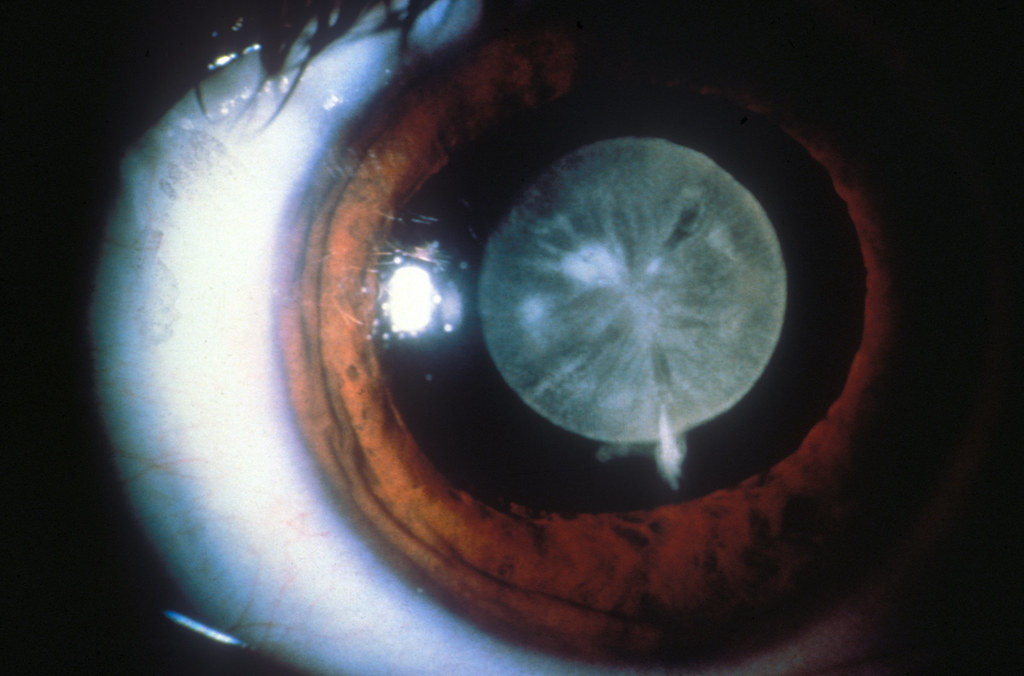FTC disclaimer: This post may contains affiliate links and we will be compensated if you click on a link and make a purchase.
Welcome to our deep dive into the world of cataracts. This common eye condition is often misunderstood, with many assuming it to be a source of eye pain.
This article aims to debunk this misconception and shed light on the true nature of cataracts and their potential for discomfort.
Understanding the facts surrounding cataracts is crucial. As they primarily affect the lens of the eye, cataracts can lead to vision impairment and, if left untreated, even blindness.
However, contrary to common belief, they typically do not cause pain or discomfort in the eyes. This article strives to give a detailed account of cataracts, their symptoms, and effective treatments (source).
Join us as we explore this topic and provide you with the knowledge to better understand cataracts and their impact on vision and quality of life.
What are Cataracts?

Cataracts are cloudy patches that form on the eye’s lens, predominantly caused by the breakdown of proteins in the lens as one age.
This breakdown is similar to looking through a dirty window, affecting vision and challenging routine tasks. Cleveland Clinic considers cataracts an inevitable part of aging, with age-related cataracts being the most common type.
There are several types of cataracts, each defined by their location in the lens, similar to the layers of an apple:
- Nuclear Cataracts form in the nucleus, the core of the lens.
- Cortical Cataracts form in the cortex, surrounding the nucleus like the fruit of an apple.
- Posterior Subcapsular Cataracts form in the posterior cortex, the back of the lens, akin to the apple skin. Cleveland Clinic states this type is a common but treatable complication of cataract surgery.
- Congenital Cataracts are present at birth or develop during childhood, often due to genetic factors or prenatal infections. Mayo Clinic highlights that these cataracts don’t always affect vision but are usually removed promptly if they do.
Cataracts can significantly impact a person’s vision, leading to hazy visuals and glare around lights, ultimately interfering with daily life.
Cataracts and Eye Pain
One common misconception about cataracts is that they cause pain in the eye. However, according to experts, this isn’t usually the case.
Cataracts develop slowly inside the eye’s lens, causing no direct pain. The discomfort often associated with cataracts is actually due to the symptoms they cause, rather than the cataract itself.
Symptoms of Cataracts
One primary symptom of cataracts is light sensitivity or glare. This occurs when the cataract causes light to scatter within the eye, leading to discomfort but not direct pain. This symptom is often misunderstood as pain caused by the cataract. (source)
Another common symptom is blurred vision. This happens when proteins clump up in the lens, blocking light from entering and creating a blurry image. While this can be uncomfortable, it does not result in pain. (source)
Understanding these symptoms can help debunk the myth that cataracts are painful, and allow for better management and treatment of the condition.
Symptoms and Warning Signs of Cataracts
Cataracts, a common eye condition, manifest through a variety of symptoms. These include cloudy, blurry, or foggy vision and changes in color perception, often leading to colors appearing faded or less vivid (Cleveland Clinic).
As the cataract grows larger, it affects more of the eye’s lens, altering the light passing through it and potentially leading to noticeable vision loss (Mayo Clinic).
Other symptoms may include increased sensitivity to light, double vision, or seeing “halos” around lights. It’s crucial to note that cataracts typically don’t cause pain, but they can make your eyes more sensitive to light, causing discomfort.
Recognizing the Warning Signs
If you notice any changes in your vision, such as sudden double vision or flashes of light, it is essential to seek medical attention immediately.
These could be signs of serious complications like retinal detachment, which requires immediate treatment (Cleveland Clinic).
Regular eye check-ups can help catch cataracts early and create a treatment plan to preserve your vision (Cedars-Sinai).
Treatment Options for Cataracts
When dealing with cataracts, there are various treatment options available. These options can be broadly categorized into non-surgical and surgical methods.
Non-Surgical Options
Non-surgical methods can be quite effective in the early stages of cataract development. These methods include the use of new eyeglasses, anti-glare sunglasses, or magnifying lenses for reading and other activities.
Additionally, making small lifestyle changes, such as using brighter lights at home or work, can help manage cataracts.
Surgical Options
When non-surgical methods are no longer effective, surgical removal of the cataract may be necessary. The most common type of cataract surgery is phacoemulsification.
During this process, ultrasound waves are used to break up the lens, which is then removed by suction. A new, artificial lens is inserted into the eye (source). This surgery has a high success rate, with 9 out of 10 people seeing better afterward (source).
Types of Cataract Surgery
There are several types of cataract surgery, including traditional cataract surgery and laser-assisted cataract surgery. The choice between these options depends on the type and severity of the cataract, and should be discussed with your eye doctor (source).
Managing Cataracts and Seeking Treatment
Living with cataracts can be challenging, but there are ways to manage your symptoms and lead a comfortable life.
Wearing polarized sunglasses can help reduce the glare in strong sunlight. Using a magnifying glass for reading and adding brighter lightbulbs to your lamps can enhance visibility.
It’s also advisable to avoid driving at night if glare from headlights is bothersome. Regularly seeing your eye care provider according to their suggested schedule and managing any underlying medical conditions, such as diabetes, are also crucial steps to take.
Regular Eye Exams:
The Key to Early Detection: Regular eye exams are vital in detecting and managing cataracts early.
If you experience symptoms like blurred vision, contacting your healthcare provider promptly is essential. Remember, changes in your vision could indicate various eye problems, not just cataracts.
Therefore, seeking professional advice is essential to receive appropriate treatment.
Understanding and Overcoming the Fear of Cataracts Cataracts may be a common part of aging, but the prospect of eye surgery can still be nerve-wracking.
However, it’s important to remember that cataract surgery is one of the most routine procedures in the U.S.
Discussing your concerns with your healthcare provider can help you decide on the right timing.
Other Eye Conditions and Cataract Formation
Research indicates that cataracts, a common vision impairment characterized by clouding of the lens, can be associated with other eye conditions. For instance, dry eyes and refractive errors may increase the risk of cataract formation.
Moreover, patients with glaucoma, a condition characterized by elevated eye pressure, often have concurrent cataracts. Managing these conditions alongside cataracts can be complex, requiring careful surgical planning.
For successful cataract treatment, it’s important to manage these conditions effectively. For instance, microinvasive glaucoma surgery (MIGS) can be performed alongside cataract surgery for patients with glaucoma. Similarly, pre-existing corneal diseases must be addressed prior to cataract surgery to avoid complications.
Ultimately, understanding the interplay between these conditions and cataracts can guide more effective treatment strategies and patient care.
Conclusion
In wrapping up our exploration of cataracts, it’s essential to emphasize the importance of understanding the symptoms and seeking proper treatment.
As we’ve debunked, cataracts do not cause eye pain. However, they can lead to symptoms like blurred vision, seeing “halos” around lights, and frequent changes in eyeglass or contact lens prescription.
If you experience any discomfort or changes in vision, don’t hesitate to consult with an ophthalmologist or optometrist.
They can provide a thorough examination and recommend appropriate treatment, which may include surgery if symptoms interfere with daily tasks.
Remember, awareness and timely treatment can significantly improve the outlook for those living with cataracts.








